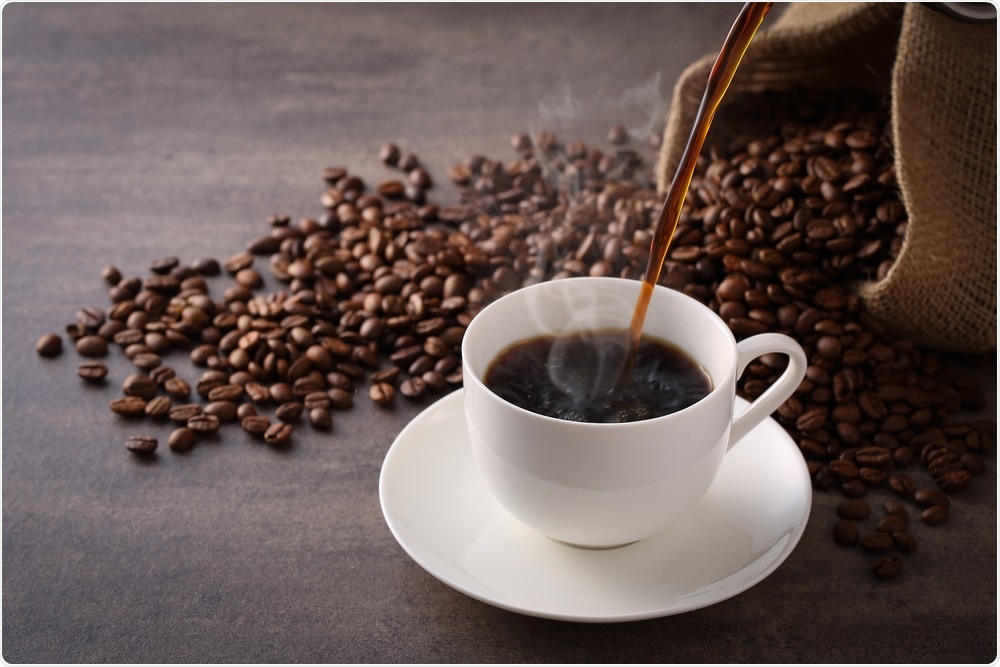Cold-brew might be a popular trend in coffee-making, but little is known about the way this process changes the chemical characteristics of the drink.
Now, researchers have reported that the content of promisingly health-promoting antioxidants in heat-free brewed coffee can considerably vary from a cup of coffee brewed with the same beans in the standard way, specifically for dark roasted beans.

Image Credit: jazz3311/Shutterstock.com
The scientists are presenting the results of their study via the American Chemical Society (ACS) SciMeetings online platform.
This study can inform coffee enthusiasts about how they may want to craft their own coffee at home, based on science and on analytical chemistry.”
Meghan Grim, Undergraduate Student, American Chemical Society
Grim had participated in the study.
“After I first tried cold-brew coffee, I wanted to make it at home, but it didn’t turn out too great,” stated Niny Z. Rao, Ph.D., the principal investigator of the project. Along with her collaborator, Megan Fuller, Ph.D., Rao studied the scientific literature to find out where she had gone wrong. “It turns out there weren’t any studies on cold-brew coffee at the time,” added Rao, “so we decided to do some.”
In the cold-brewing process, ground coffee is combined with colder or room-temperature water and then soaked for a couple of days, at times in a refrigerator. This coffee can be drunk either hot or cold.
In the hot brewing process, ground coffee is combined with boiling or near-boiling water and then soaked at the most for a few minutes. In both cases, the coffee grounds are at times pressed, and the beverage is subsequently filtered to eliminate the grounds.
The scientists from Thomas Jefferson University had earlier evaluated the antioxidants and acidity in cold- and hot-brew java from slightly roasted beans. In yet another study, the researchers examined the impact of dark and medium roasting, and of coarse and medium grinding, on a few attributes of coffee.
Currently, the team is making a deeper analysis by roasting Columbian beans at five varying temperatures—from light roasting to dark roasting at 174 °C and 209 °C, respectively—and analyzing this effect on antioxidants, acidity, and other natural chemicals in cold- and hot-brew coffee.
In the case of the lighter roasts, Rao’s group discovered that the content of antioxidants and caffeine is quite similar in cold- and hot-brew coffee. On the other hand, the darker roasts displayed major differences.
Hot brewing extracts more antioxidants from the grind than cold brew, and this difference increases with the degree of roasting.”
Niny Z. Rao, PhD, Project Principal Investigator, American Chemical Society
Therefore, hot-brew of dark roasts offers a potentially healthier drink. In addition, the concentration of specific kinds of acids, as well as total dissolved solids, is also more in a hot brew. The pH is approximately the same for both cold and hot brews at an equivalent roast, although both brews turn out to be less acidic with the rise in roasting temperature.
“My advice to consumers has always been to drink what they like,” added Rao. “But if you want to craft a coffee beverage with antioxidants or acidity in mind, you may want to pay attention to roast. If you want a low-acid drink, you may want to use a darker roast. But remember that the gap between the antioxidant content of hot- and cold-brew coffee is much larger for a darker roast.”
Reproducibility is one of the biggest difficulties in all these studies.
We have performed experiments in which we’re using the same beans, the same machine, the same settings, and it comes out not quite the same as the previous batch. The same goes for brewing. To create a cup that’s consistent every time is really difficult. I have a lot of respect for the baristas who can do that.”
Niny Z. Rao, PhD, Project Principal Investigator, American Chemical Society
To reach that level of perfection, the scientists acted like drill sergeants, meticulously standardizing their procedures. They devised a process that involved the precise timing for adding the water to the ground coffee, the right technique of pouring the water and the duration of this pouring process, the ideal way to shake the solution, and the optimized ways to press the brewed coffee and examine it.
The researchers fixed time limits for every step, with margins of only a few seconds. This rigor generated relatively more reproducible outcomes.
The team has currently started to compare the effect of both brewing processes and the degree of roast on furans, which are flavor compounds added to raw coffee beans and are also produced through roasting.
These compounds are specifically significant in cold-brew coffee, which lacks the same evident aroma as the hot drink because it does not have the steam to carry volatile organic compounds to the nose.